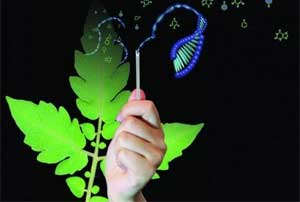- Home
- Editorial
- News
- Practice Guidelines
- Anesthesiology Guidelines
- Cancer Guidelines
- Cardiac Sciences Guidelines
- Critical Care Guidelines
- Dentistry Guidelines
- Dermatology Guidelines
- Diabetes and Endo Guidelines
- Diagnostics Guidelines
- ENT Guidelines
- Featured Practice Guidelines
- Gastroenterology Guidelines
- Geriatrics Guidelines
- Medicine Guidelines
- Nephrology Guidelines
- Neurosciences Guidelines
- Obs and Gynae Guidelines
- Ophthalmology Guidelines
- Orthopaedics Guidelines
- Paediatrics Guidelines
- Psychiatry Guidelines
- Pulmonology Guidelines
- Radiology Guidelines
- Surgery Guidelines
- Urology Guidelines
Dipstick technology could revolutionize disease diagnosis

New dipstick technology that enables pathogen detection and the rapid diagnosis of human, animal and plant disease in even the most remote locations has been developed by University of Queensland scientists.
School of Agriculture and Food Sciences researcher Professor Jimmy Botella said the technology could extract DNA and RNA from living organisms in as little as 30 seconds without specialized equipment or personnel.
"We have successfully used the dipsticks in remote plantations in Papua New Guinea to diagnose sick trees, and have applied it to livestock, human samples, pathogens in food, and in detecting environmental risks such as E. coli-contaminated water," he said.
"This technology will give people in developed and developing nations a new way of tackling a range of agricultural, health and environmental problems."
Professor Botella, who led the research team with Dr Michael Mason, said current commercial kits could isolate DNA and RNA through a long and cumbersome process requiring specialized laboratory equipment that was impractical in the field.
The UQ research team initially developed the dipstick technology for particular plants and later found it could purify DNA from many agriculturally important species.
"We found it had much broader implications as it could be used to purify either DNA or RNA from human blood, viruses, fungi and bacterial pathogens from infected plants or animals," Professor Botella said.
UQ's commercialization company, UniQuest, has filed a patent application on the dipstick technology and is seeking commercial partners to help make it broadly available.
"Our technology eliminates the need for a specialized laboratory for sample preparation, and is a lot simpler, faster and cheaper than anything else available, making diagnostics accessible to everyone," Professor Botella said.
"Our dipsticks, combined with other technologies developed by our group, mean the entire diagnostic process from sample collection to final result could be easily performed in a hospital, farm, hotel room or even a remote area such as a tropical jungle."
For more details click on the link: Yiping Zou, Michael Glenn Mason, Yuling Wang, Eugene Wee, Conny Turni, Patrick J. Blackall, Matt Trau, Jose Ramon Botella. Nucleic acid purification from plants, animals, and microbes in under 30 seconds. PLOS Biology, 2017; 15 (11): e2003916 DOI: 10.1371/journal.pbio.2003916

Disclaimer: This site is primarily intended for healthcare professionals. Any content/information on this website does not replace the advice of medical and/or health professionals and should not be construed as medical/diagnostic advice/endorsement or prescription. Use of this site is subject to our terms of use, privacy policy, advertisement policy. © 2020 Minerva Medical Treatment Pvt Ltd